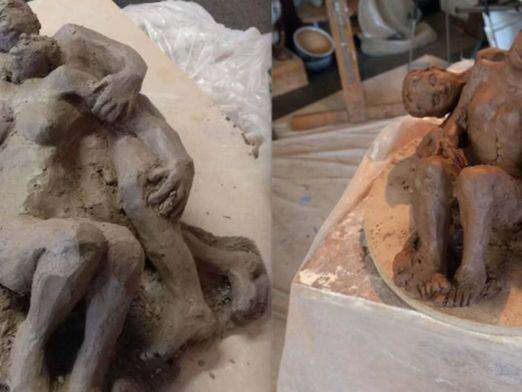Living and Aging With Chronic Respiratory Disease
A cough, wheeze, or congestion are frustrating when you get sick. But for older adults living with chronic respiratory disease, these uncomfortable symptoms can be a fact of life. There are many types of respiratory diseases in seniors. Some of these diseases are chronic and worsen with advancing age. Others are more acute and will cause illness within a short period.

A cough, wheeze, or congestion are frustrating when you get sick. But for older adults living with chronic respiratory disease, these uncomfortable symptoms can be a fact of life. There are many types of respiratory diseases in seniors. Some of these diseases are chronic and worsen with advancing age. Others are more acute and will cause illness within a short period.
Respiratory disease in seniors is often complex and challenging to diagnose and treat. While many people associate lung damage with smoking and secondhand smoke, there are other common causes of respiratory disease, including pneumonia, chronic bronchitis, and even infectious agents.
But you can help improve your quality of life and longevity if you know what to expect with respiratory disease. Here’s what you need to know about managing your risk for respiratory illness as you age.
Older Lungs Are Less Efficient
Your respiration system includes a network of organs and tissues to help you breathe. The key to healthy respiration is having healthy lungs to oxygenate your body. The average person takes between 17,000 and 23,000 breaths per day. The maximum amount of air that healthy lungs can hold is about six liters.
As powerful as it is, the functioning of the respiratory system decreases with age. In fact, by the age of 35, your lungs are already beginning to decline very gradually. Common changes of the lungs in older adults include a 5% decrease in pulmonary gas exchange efficiency for each decade after age 35. This reduces the ability of the lungs to exchange carbon monoxide for oxygen, so less oxygen is absorbed by the body.
Other lung changes that affect functioning occur when the diaphragm muscle gets weaker and lung tissue becomes less elastic, making it harder to take deep breaths or clear mucus from the lungs. These pulmonary problems are worsened by environmental risk factors, like cigarette smoking.
To maintain healthy lung function, the American Lung Association recommends:
-
Don’t smoke
-
Avoid indoor air pollutants, like radon
-
Avoid outdoor air pollution
-
Prevent infection by getting vaccines for illnesses such as pneumonia and flu, as well as for COVID-19
-
Exercise to keep your heart and lungs strong
-
Get regular checkups so your doctor can monitor your breathing
Respiratory Disease Can Be Progressive
Living with respiratory diseases in old age can be difficult, especially if the condition is persistent. Some respiratory diseases can be triggered by viruses like respiratory syncytial virus (RSV), COVID-19, and other strains of flu and pneumonia. Some respiratory diseases can also be brought on by exposure to toxins, as is the case for many firefighters who are exposed to toxic smoke in their jobs.
Diagnosing your respiratory disease starts with evaluating your lung capacity. For example, spirometry is pulmonary function testing your doctor can perform to diagnose chronic obstructive pulmonary disease (COPD) or asthma. It measures the amount and speed of air you can exhale from your lungs. Any changes in the amount of air you can expel can indicate some form of lung disease, either acute or persistent.
Some common warning signs of respiratory illness and disease progression include:
-
Chronic cough lasting eight weeks or longer
-
Shortness of breath without exertion or that doesn’t go away after exercising
-
Chronic mucus production
-
Wheezing
-
Coughing up blood
-
Chronic chest pain that lasts for a month or more
Asthma Can Strike at Any Age
Asthma is a chronic inflammatory condition of the airways. It’s a respiratory condition present in about 6.8% of seniors 65 years and older. The number of people with asthma is expected to grow as the population ages.
Asthma can cause coughing, wheezing, and shortness of breath, and symptoms often worsen at night or when an individual is exercising or exposed to allergens or cold air. While it’s generally diagnosed in childhood, adults can be diagnosed in middle age or older.
Asthma management includes the use of inhaled corticosteroids (ICS) and long-term controller medications such as inhaled cromolyn, leukotriene modifiers, and long-acting beta agonists. In addition to drugs, patients should manage their asthma by avoiding triggers (such as tobacco smoke), obtaining allergy testing, and staying physically active.
COPD Is Common and Treatable
COPD is not one disease—it is a group of conditions limiting airflow and making it hard to breathe. It’s a type of obstructive lung disease that commonly includes emphysema, in which the air sacs of the lungs are damaged and enlarged. It also includes chronic bronchitis, a long-lasting cough caused by chronic inflammation of the bronchial tubes.
According to the Centers for Disease Control and Prevention (CDC), more than 16.4 million Americans have COPD. It’s the fourth-leading cause of death in the U.S. COPD causes a progressive decline in function of the airways and is often underdiagnosed, and its impact is frequently underestimated. About 35% of adults over age 70 with COPD are healthy and asymptomatic. The CDC also reports that about 50% of adults with low pulmonary function didn’t know they had COPD.
The leading cause of COPD is smoking, but other factors, such as air pollution, can play a role in its development. If you are diagnosed with COPD, your doctor may recommend treatment with inhaled medications, oxygen therapy, physical therapy, and pulmonary rehabilitation. Inhaled medications are used to open the airways, reduce inflammation in the lungs, and improve breathing, while oxygen helps relieve symptoms at night or when activity is limited. Physical therapy and pulmonary rehabilitation help strengthen lungs to help handle everyday activities more efficiently.
Find Age-Friendly Care Where You Live
Age-friendly Health Care is care that addresses your unique needs and wants. It can help you
enjoy a better quality of life with the care that is safe and based on what research shows are the most important things to pay attention to as we get older, the 4Ms for healthy aging: what Matters most to you, the Medication you take and how it impacts your wellbeing, Mentation (that’s your mood and memory) and your Mobility, which is so crucial for maintaining your health and independence.
Did you know that more and more health systems are offering Age-Friendly Care? Learn about Age-Friendly Health Care and where you can find it at AgeFriendly.org.















There are no comments for this article yet. Be the first to leave a comment